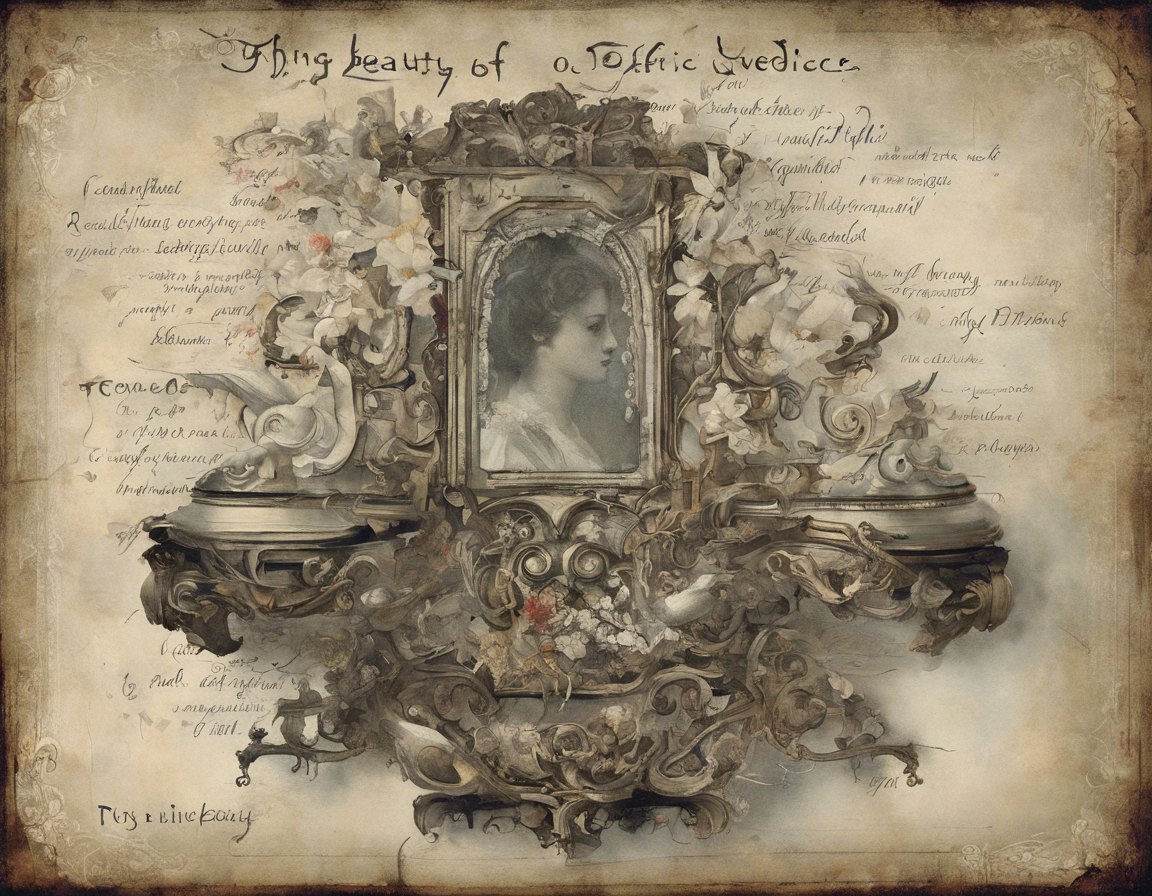Poetry has a way of enchanting readers with its vivid imagery, emotional depth, and thought-provoking themes. The use of poetic devices enhances the beauty and impact of a poem, capturing the reader’s attention and imagination. “A Thing of Beauty” by John Keats is a prime example of a poem that is rich in literary devices, inviting readers to delve deeper into its layers of meaning and beauty.
The Power of Imagery
One of the most striking aspects of “A Thing of Beauty” is the vivid imagery that Keats employs throughout the poem. From the opening lines that describe “A thing of beauty is a joy forever” to the imagery of “boughs heaped with sweet-briar” and “violet beds”, the poem is a tapestry of sensory experiences. This imagery appeals to the reader’s senses, creating a vivid picture of the beauty that the poem celebrates.
Personification and Symbolism
Keats also utilizes personification and symbolism to imbue the poem with deeper meaning. The idea of beauty being “a joy forever” suggests that beauty has a timeless and eternal quality. The “daisies pied” and “foster-nurse of green” personify nature, portraying it as a nurturing and life-sustaining force. These elements add richness to the poem, inviting readers to reflect on the significance of beauty and nature in their own lives.
Alliteration and Assonance
The use of alliteration and assonance in “A Thing of Beauty” adds a musical quality to the poem, enhancing its aesthetic appeal. Phrases like “shade of the forest glades” and “wild ecstasy” not only create a melodic rhythm but also emphasize the natural beauty that the poem celebrates. This use of sound devices heightens the emotional impact of the poem, drawing readers into its lyrical beauty.
Metaphor and Simile
Metaphors and similes are also prevalent in “A Thing of Beauty”, allowing Keats to draw comparisons and create visual imagery that resonates with the reader. The line “like a rose full-blown” compares a beautiful sight to a blossoming flower, evoking a sense of fragrance, freshness, and vibrancy. This comparison enhances the reader’s understanding of the beauty being described, making it more tangible and evocative.
Themes of Beauty and Transcendence
At its core, “A Thing of Beauty” explores the themes of beauty and transcendence, inviting readers to contemplate the nature of aesthetic experience and its power to uplift the human spirit. The poem suggests that beauty has the ability to transcend time, space, and experience, offering a source of joy and inspiration that enriches our lives. Through its lyrical language and poetic devices, “A Thing of Beauty” serves as a testament to the enduring power of beauty in a world filled with chaos and turmoil.
Frequently Asked Questions (FAQs)
1. What is the central theme of “A Thing of Beauty” by John Keats?
The central theme of “A Thing of Beauty” is the transformative power of beauty and its ability to bring joy and inspiration to our lives. Keats celebrates the eternal nature of beauty and its capacity to uplift the human spirit.
2. How does John Keats use imagery in “A Thing of Beauty”?
John Keats uses vivid imagery in “A Thing of Beauty” to create a sensory experience for the reader. Through descriptions of nature and beauty, Keats paints a vivid picture that appeals to the senses and evokes a deep appreciation for the natural world.
3. What are some common poetic devices used in “A Thing of Beauty”?
Some common poetic devices used in “A Thing of Beauty” include personification, symbolism, alliteration, assonance, metaphor, and simile. These devices enhance the poetic language of the poem and add layers of meaning and beauty.
4. How does Keats explore the concept of transcendence in the poem?
Keats explores the concept of transcendence in “A Thing of Beauty” by portraying beauty as a timeless and eternal force that can elevate the human spirit beyond the mundane and everyday. Through images of nature and aesthetic beauty, the poem suggests a connection to higher truths and spiritual ideals.
5. What is the significance of sound devices in “A Thing of Beauty”?
Sound devices such as alliteration and assonance enhance the musical quality of the poem, creating a rhythmic flow that engages the reader’s auditory senses. These devices add a melodic and harmonious dimension to the poem, enriching its aesthetic appeal.
In conclusion, “A Thing of Beauty” by John Keats is a masterful example of poetry that showcases the beauty and power of poetic devices in conveying themes of beauty, transcendence, and inspiration. Through its rich imagery, symbolism, and metaphor, the poem invites readers to contemplate the enduring nature of beauty and its ability to uplift the human spirit in a world often overshadowed by darkness and chaos.
